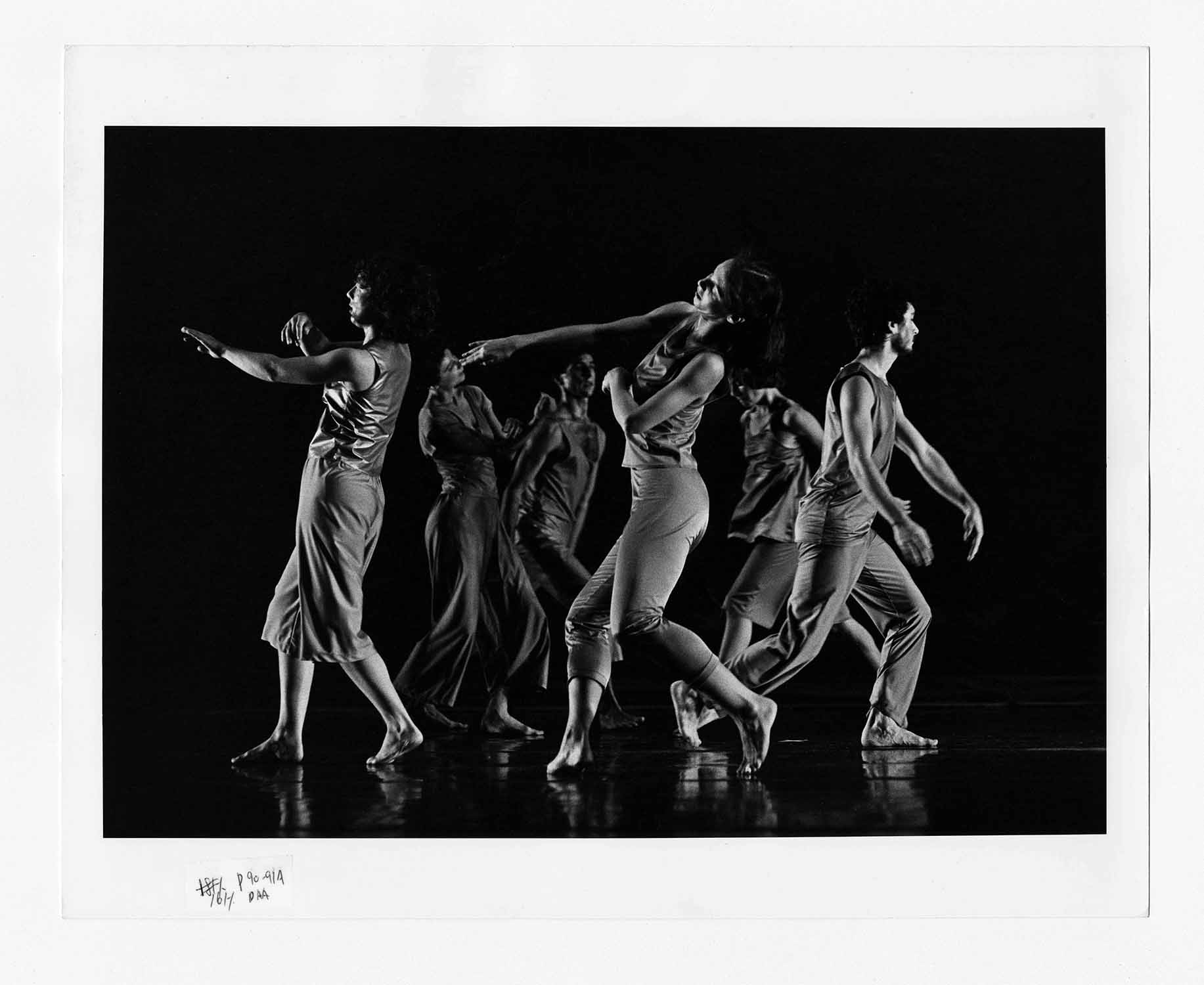In 2019, in partnership with the Trisha Brown Dance Company, the Jerome Robbins Dance Division of the New York Public Library acquired the Trisha Brown Archives. Once the collection is processed, it will be open to researchers at The New York Public Library for the Performing Arts.
Selections from the Trisha Brown Dance Company holdings and the Estate of Trisha Brown are also in the collections of Walker Art Center in Minneapolis, The Museum of Modern Art in Manhattan, and Tate Modern in London. Trisha Brown’s drawings are managed by her gallery, Sikkema Jenkins & Co.
One of the most acclaimed and influential choreographers and dancers of her time, and an artist whose work has earned recognition in numerous institutions, Trisha Brown engaged collaborators who are themselves leaders in music, theater, and the visual arts. Together with artists and composers such as Robert Rauschenberg, Fujiko Nakaya, Donald Judd, Nancy Graves, Robert Ashley, Laurie Anderson, John Cage, Salvatore Sciarrino, and many more, Brown created over 100 choreographies and six operas.
As a whole, the Trisha Brown Archives represents a comprehensive record of Brown’s creative process, with an interdisciplinary and collaborative focus reflected in the scope of its material. Today, the Trisha Brown Dance Company relies on this important resource for the reconstruction of historic choreographies, and continued performance, licensing, and educational programming surrounding Brown’s prolific output.
In addition to Trisha Brown’s personal papers, notebooks, and library, the archives comprises a robust audiovisual collection, with recordings dating as early as 1966, including decades of rehearsal footage, performance documentation, interviews, lecture demonstrations, studio showings, sound recordings, and works of film and video art. More than 1,500 titles from the audiovisual collection have been preserved and digitized, thanks to generous support from The Andrew W. Mellon Foundation and the National Film Preservation Foundation.
The archives also includes the institutional records of the Trisha Brown Dance Company, detailing administrative, artistic, and educational activities since its founding in 1970, with departmental records and significant holdings in photographic prints, slides, and ephemera, as well as historic sets, costumes, and stage maquettes.








